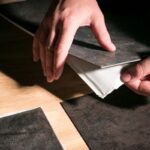What’s the difference between tree trimming and pruning?
Although “tree trimming”, and “tree-pruning” are frequently used interchangeably they are not the same thing. Let’s see how to distinguish the two terms.
What is Tree Trimming?
Tree trimming is the act or cutting of branches or leaves that are too large for aesthetic reasons. It can also help to ensure that a plant grows properly.
What is Tree Pruning?
Tree pruning involves the removal of dead or cluttered branches and leaves. This is a carefully considered process that looks at the whole tree and encourages growth. Pruning is commonly used to remove diseased and infected branches. This protects trees from infection.
What are the benefits to trimming and pruning trees?
Tree trimming is important to avoid old branches falling or causing injury or property damage. These are just a few of the reasons you should trim your trees each year.
- Safety –Removing dead and broken tree branches before they fall can help you to avoid any injury to yourself or others. Also, you can prevent tree limbs falling onto your house or car. If you find a dead branch on a tree, either chop it down or have it removed.
- Appearance-Keep your trees looking great! The best rule of thumb is not to trim trees so that they grow in an unnatural form.
- Tree Health — When done correctly, trimming trees to remove dead or diseased branches is an effective way of keeping your trees healthy. Tree trimming helps to encourage proper growth and maintain trees’ strength. Tree health can be improved even if only a few branches and leaves are removed.
How to Trimming or Pruning a Tree the Right Way
The following branches can be safely removed when pruning or trimming trees:
- Branchs that cross or intersect
- Lower branches that can block your ability to walk
- Blocking light and windows with branches
- Branch that blocks intersections or interferes with street signs
- Branchs that block or obscure the entryway to your home
- You will need tools and materials to trim or prune trees
Here is a list to help you choose the right materials for tree trimming.
- Pruning or lopping shears
- Small chainsaw
- Hand saw
- Use a chisel or sharp blade
- Gloves
- Protective eyewear
- Single-pole ladder or extension ladder
Tree trimming steps
Before trimming a tree make sure you have all of the necessary tools. You can rinse them with warm water and soap, and rub them with an oil stone (for sharpness).
1) Protect your eyes and hands from injury by wearing gloves before beginning tree trimming.
2) To inspect the tree’s limbs, climb up a single pole ladder or an extension ladder. Place it on the ground so that it is stable against the tree. Take care to not fall debris from limbs as you trim them.
To prevent bark splitting, cut a 1/4-inch notch with a handsaw two to three times as far from the trunk before you cut off an entire tree branch.
4) To make a relief cut through the branch, place a handsaw or small chainsaw just outside of the notch. This will remove the branch’s weight and allow you to finish the cut without it falling apart.
5) Next identify the branch collar. This refers to the area growing from the stem tissue at a branch’s base. Never cut into the branch collar. This part is responsible to forming scar tissue and healing your tree after the cut.
6) With a chainsaw, cut just outside of the branch collar. Then angle your cut downward and away the stem. Your cut should be made just above the area where the tree trunk meets the stem.
7) Use pruning shears to trim small branches to 1/4 inch beyond the bud to encourage growth.
8) To prevent insects entering, remove any branch that has a broken branch.
Steps to Pruning Trees
Pruning is a vital step in maintaining healthy trees. Proper pruning techniques are essential to ensure your trees remain healthy. If you make a mistake, your tree might be dead and you will need to hire a professional to remove it.
Three-cut pruning is a method that allows you to make clear and efficient pruning cuts.
- Make a cut along the underside of your branch that you wish to prune. Cut approximately 12 inches below the branch collar. If the bark is cut only at the top of a limb, it can pull away from the main trunk or branch. Avoid this damage by cutting the first undercut.
- Next, you will need to make a cut at the top of your branch. This should be about 6 inches away from the first undercut. Continue cutting until the branch snaps to your original cut and falls away.
- Finally, trim the branch back to the root collar. Flush cuts should be avoided as they can damage the tree’s growth layer and cause it to stop healing. You should make sure the angle of the cut is 45° to avoid water pooling on the tree’s open wound.
TOP 8 PRUNING TIPS
We would love to be your go-to for pruning, but many of our clients prefer to work outside with their gardens. Working in the yard is a great way to relax and get a sense of accomplishment.
Remember that every cutting you make can have an effect on the growth (and health!) of your plants in the future. These eight important pruning tips will keep your plants looking beautiful and healthy.
1) Some tree species are best pruned during the dormant period. Our Elm and Oak trees are two examples. These tree species can get infected with serious fungal diseases if they are not pruned during their growing seasons.
2) Remove any damaged, dead or diseased branches. They don’t contribute anything to the tree and may allow decay into the main trunk.
3) Take out any sprouts (root suckers), that are growing from the tree’s base, if any.
4) Trim any fast-growing, vertical branches (water sprouts).
5) Never leave stubs. If you are cutting the entire branch, the branches should be cut to a lateral or bark collar.
6) Choose the right pruning tool. Hand snips and loppers can only prune the maximum size branches. Hand snips won’t be able to cut a 1-inch branch.
7) Don’t worry about large branch pruning. Large branches can often be removed in sections or lowered with ropes in order to safely remove them from trees.
8) If the pruning involves climbing up the tree or using ladders, you should contact an arborist. These are the situations in which homeowners frequently get hurt or lose their property.






